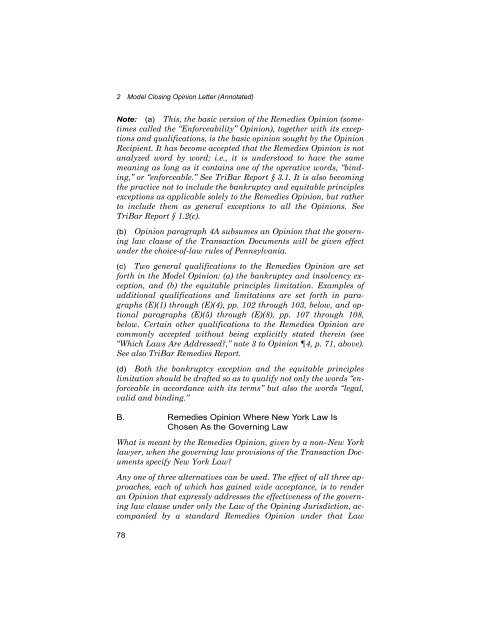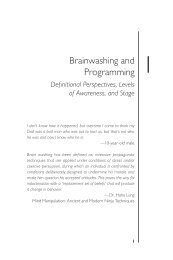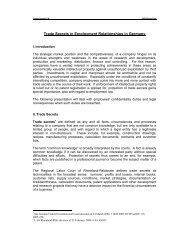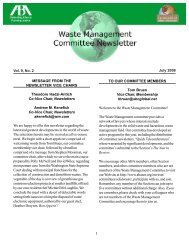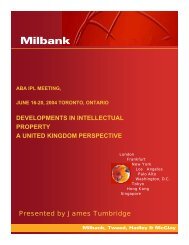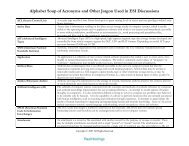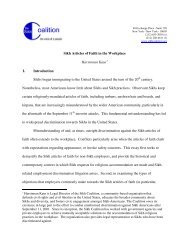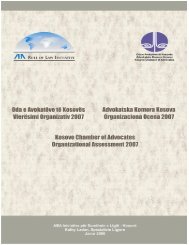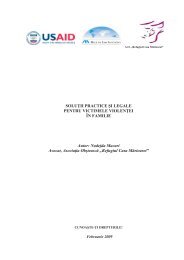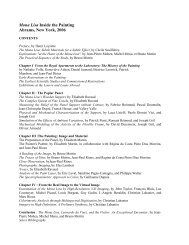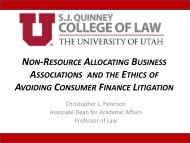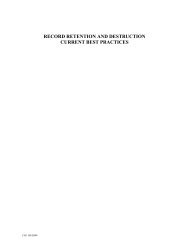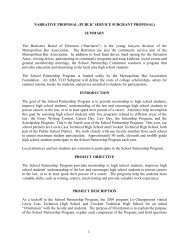Model Closing Opinion Letter (Annotated) - American Bar Association
Model Closing Opinion Letter (Annotated) - American Bar Association
Model Closing Opinion Letter (Annotated) - American Bar Association
You also want an ePaper? Increase the reach of your titles
YUMPU automatically turns print PDFs into web optimized ePapers that Google loves.
2 <strong>Model</strong> <strong>Closing</strong> <strong>Opinion</strong> <strong>Letter</strong> (<strong>Annotated</strong>)<br />
Note: (a) This, the basic version of the Remedies <strong>Opinion</strong> (sometimes<br />
called the “Enforceability” <strong>Opinion</strong>), together with its exceptions<br />
and qualifications, is the basic opinion sought by the <strong>Opinion</strong><br />
Recipient. It has become accepted that the Remedies <strong>Opinion</strong> is not<br />
analyzed word by word; i.e., it is understood to have the same<br />
meaning as long as it contains one of the operative words, “binding,”<br />
or “enforceable.” See Tri<strong>Bar</strong> Report § 3.1. It is also becoming<br />
the practice not to include the bankruptcy and equitable principles<br />
exceptions as applicable solely to the Remedies <strong>Opinion</strong>, but rather<br />
to include them as general exceptions to all the <strong>Opinion</strong>s. See<br />
Tri<strong>Bar</strong> Report § 1.2(c).<br />
(b) <strong>Opinion</strong> paragraph 4A subsumes an <strong>Opinion</strong> that the governing<br />
law clause of the Transaction Documents will be given effect<br />
under the choice-of-law rules of Pennsylvania.<br />
(c) Two general qualifications to the Remedies <strong>Opinion</strong> are set<br />
forth in the <strong>Model</strong> <strong>Opinion</strong>: (a) the bankruptcy and insolvency exception,<br />
and (b) the equitable principles limitation. Examples of<br />
additional qualifications and limitations are set forth in paragraphs<br />
(E)(1) through (E)(4), pp. 102 through 103, below, and optional<br />
paragraphs (E)(5) through (E)(8), pp. 107 through 108,<br />
below. Certain other qualifications to the Remedies <strong>Opinion</strong> are<br />
commonly accepted without being explicitly stated therein (see<br />
“Which Laws Are Addressed?,” note 3 to <strong>Opinion</strong> 4, p. 71, above).<br />
See also Tri<strong>Bar</strong> Remedies Report.<br />
(d) Both the bankruptcy exception and the equitable principles<br />
limitation should be drafted so as to qualify not only the words “enforceable<br />
in accordance with its terms” but also the words “legal,<br />
valid and binding.”<br />
B. Remedies <strong>Opinion</strong> Where New York Law Is<br />
Chosen As the Governing Law<br />
What is meant by the Remedies <strong>Opinion</strong>, given by a non–New York<br />
lawyer, when the governing law provisions of the Transaction Documents<br />
specify New York Law?<br />
Any one of three alternatives can be used. The effect of all three approaches,<br />
each of which has gained wide acceptance, is to render<br />
an <strong>Opinion</strong> that expressly addresses the effectiveness of the governing<br />
law clause under only the Law of the Opining Jurisdiction, accompanied<br />
by a standard Remedies <strong>Opinion</strong> under that Law<br />
78


